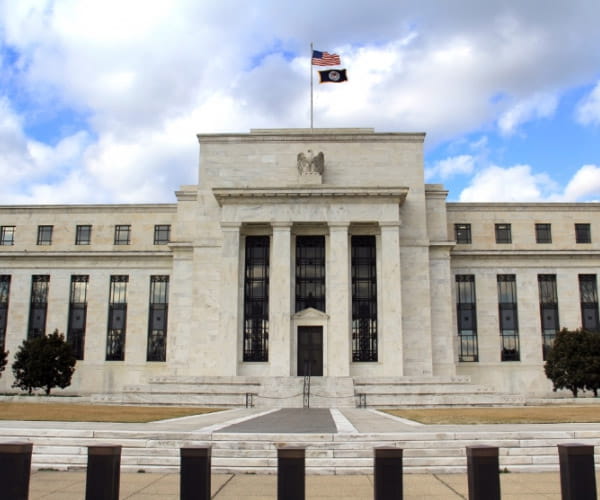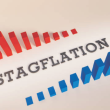by Joachim Fels, Andrew Balls, & Daniel J. Ivascyn, PIMCO
PIMCO’s annual Secular Forum this September was the 40th in our firm’s 50-year history. There were no in-person celebrations, though, because like last year we only met virtually. Still, with plenty of input from invited speakers (see box), PIMCO’s Global Advisory Board, and internal cross-divisional thematic teams, our global investment professionals zoomed in on the post-pandemic outlook for the global economy, policy, politics, and financial markets over the next five years and discussed the implications for investors’ portfolios. (This behind-the-scenes video offers a look at our forum process.) Here’s what we concluded.
Thesis
Investors and policymakers alike will have to come to grips with a radically different macro environment over the secular horizon as the post-financial-crisis, pre-pandemic New Normal decade of subpar-but-stable growth, below-target inflation, subdued volatility, and juicy asset returns is rapidly fading in the rearview mirror. What lies ahead is a more uncertain and uneven growth and inflation environment with plenty of pitfalls for policymakers. Amid disruption, division, and divergence, overall capital market returns will likely be lower and more volatile. But active investors capable of navigating the difficult terrain should find good alpha opportunities.
Three broad trends are likely to drive a major transformation of the global economy and markets
Initial conditions
As such, this year’s secular thesis further develops the themes we highlighted in our 2020 Secular Outlook, “Escalating Disruption.” We argued then that the pandemic would serve as a catalyst for accelerating and amplifying four important secular disruptors: the China–U.S. rivalry, populism, technology, and climate change.
Developments over the past year have reinforced those expectations. China–U.S. tensions have not only continued but intensified under the Biden administration. Populism and polarization have been on the rise in many countries, further fueled by politically charged divisions over lockdowns and vaccines. Digitalization and automation have been turbocharged by the pandemic. Extreme weather conditions in many parts of the world have also inflicted severe human and economic losses and contributed to major gyrations in energy markets. In our forum discussions we concluded that each of these secular disruptors will remain active in the foreseeable future.
Another important initial condition for the secular outlook is the sharp further increase in public and private sector debt caused by the pandemic recession and the policy responses. To be sure, with borrowing costs at or close to record lows, record high debt levels are not an immediate concern. However, higher leverage implies heightened vulnerability of public and private sector balance sheets to negative growth shocks and to positive interest rate shocks, thus increasing the risk of destabilizing runs on sovereign and private borrowers. Moreover, elevated debt levels and highly financialized economies as measured by wealth-to-income ratios will likely constrain central banks’ ability to push interest rates aggressively higher without causing severe economic pain – a financial market dominance theme to which we will return below.
Last but not least, the pandemic either forced or encouraged many individuals to pause and rethink their lifestyle and the work-life balance. It is still too early to tell if and how preferences will change and how lasting any changes will be. However, it is well possible that we will see significant shifts in preferences for work versus leisure, for working from home versus the office, and for working in certain sectors or locations versus others. Also, consumption patterns may change permanently as many people may no longer be comfortable traveling or participating in mass gatherings even after the pandemic ends. This calls for a larger dose of humility in trying to predict economic outcomes over the secular horizon and strengthens our earlier point about elevated macro uncertainty in the years ahead.
Secular drivers
In our discussions, we identified three broad trends that are likely to drive a major transformation of the global economy and markets.
While a net zero carbon world is desirable for many reasons, the path to this destination is unlikely to be smooth
The transition from brown to green. With increasing voter and consumer focus in many parts of the world, governments, regulators, and the corporate sector are stepping up their efforts to decarbonize and achieve net zero emissions by 2050. This means that both private and public investment in renewable sources of energy will be boosted over our secular horizon and for years to come. While the heavy lifting will have to be done by the private sector, both the U.S. bipartisan infrastructure bill and the EU Next Generation fund will support the transition with sizable spending on “green” infrastructure over the next five years.
Of course, higher private and public spending on clean energy is likely to be partly, but not fully, offset by lower investment and capital destruction in brown energy sectors such as coal and oil. During the transition there is a potential for supply disruptions and spikes in energy prices that sap growth and boost inflation, as recent events in China and Europe have demonstrated. Moreover, as the process creates winners and losers, there is a potential for political backlash in response to job losses in brown industries, higher carbon taxes and prices, or carbon border adjustment mechanisms that make imports more expensive. While the destination – a net zero world – is desirable for many reasons, including economic ones, the path to this destination is unlikely to be smooth.
Faster adoption of new technologies. In last year’s outlook we expected the pandemic to turbocharge digitalization and automation. This is borne out by the data available so far, which show a significant rise in corporate spending on technology. Similar increases in investment in the past, e.g., during the 1990s in the U.S., have been accompanied by an acceleration in productivity growth. Developments over the past year suggest this may again have been the case as productivity has surged, though the cyclical rebound clearly also played a role. It remains to be seen whether the recent surge in tech investment and productivity growth is a one-off or the beginning of a stronger trend, but the data so far do support the notion that the pandemic served as a catalyst for a faster adoption of new technologies.
Digitalization and automation will lead to better economic outcomes overall by creating new jobs and making existing jobs more productive. But it will also be disruptive for those whose jobs will disappear and who may lack the right skills to find employment elsewhere. As with globalization, the dark side of digitalization and automation will likely be rising inequality and more support for populist policies at both ends of the political spectrum.
Many policymakers and societies are focused on addressing widening income and wealth inequality and making growth more inclusive
Sharing the gains from growth more widely. The third potentially transformative trend underway is the heightened focus by policymakers and society at large on addressing widening income and wealth inequality and making growth more inclusive. The latest case in point is the new focus by China’s leadership on “common prosperity,” aimed at narrowing the private wealth and income gap. As we write this essay, another example is the U.S. Democrats’ proposed $3.5 trillion “soft infrastructure” spending package, which is mainly focused on social safety net programs such as Medicare and includes, among other things, expanded child tax credits for working families, universal preschooling, and free community college. While the size of a package that will pass Congress is likely to be much smaller, the changes would “hard-code” such policies for years to come.
Meanwhile, partly due to pressure from investors increasingly focused on ESG (environment, social, and governance) and partly due to self-interest, many companies are focused on improving working conditions, pay structures, and workforce diversity. Anecdotal evidence suggests that in many companies, the balance of power in the employer-employee relationship has started to shift from the former to the latter, thus improving workers’ bargaining power. It remains to be seen whether this trend continues or whether work from home with the help of technology eventually allows companies to outsource more jobs to cheaper domestic and global locations, thus preserving or even increasing employers’ bargaining power.
Macro implications
In an Age of Transformation characterized by disruptive trends and more interventionist policies, economic cycles may well be shorter in duration, larger in amplitude, and more divergent across countries. It is not difficult to imagine investment booms fueled by accelerating labor-intensive green investment and efforts to diversify or re-shore supply chains in order to increase resiliency, followed by busts caused by stop-go fiscal policies, energy price shocks, or overly ambitious and abrupt regulatory changes.
What lies ahead globally is a more uncertain and uneven growth and inflation environment
Cyclical divergence among regions and countries is also likely to increase as the various transformations progress at different speeds and as fiscal policy, which is often driven by election cycles that are asynchronous across countries, becomes a more dominant driver of demand. Moreover, with China becoming more self-sufficient and its economic growth likely to slow further over the secular horizon due to demographics, deleveraging, and decarbonization, one large common driver of export growth in many emerging and developed economies will likely fade in importance.
Like economic growth, inflation in the Age of Transformation is likely to become more volatile within countries and more divergent across regions. We continue to believe that inflation tails have become fatter, with periods of much higher, and periods of much lower, inflation becoming more probable. Upside risks emanate from the net zero transition and its impact on carbon prices, and from de-globalization, fiscal activism, and potential “mission creep” at central banks. Downside risks stem from companies learning to do more with less thanks to better technology. In addition, record high levels of debt and leverage increase the risk of debt deflation in the case of negative growth shocks.
Taken together, the pre-pandemic New Normal decade of subpar-but-stable growth, below-target inflation, subdued volatility, and juicy asset returns is rapidly fading in the rearview mirror. What lies ahead in the Age of Transformation is a more uncertain and uneven growth and inflation environment with plenty of pitfalls for policymakers.
Investment conclusions
We believe that the Age of Transformation over the next five years will mean a more uncertain outlook for growth and inflation – within countries and across regions. A world of disruption and divergence will present more difficult terrain for investors than the experience of the New Normal over the past decade. But we also believe it will provide good alpha opportunities for active investors who are equipped to take advantage of what we expect to be a period of higher volatility and “fatter tails” than the common bell curve distribution.
Higher macroeconomic and market volatility is very likely to mean lower returns across fixed income and equity markets. Starting valuations – low real and nominal yields in fixed income markets and historically high equity multiples – reinforce the expectation.
Central bank interventions have inflated asset prices as a byproduct of the monetary authorities’ macro interventions. Developed country monetary and fiscal policy actions to combat the COVID-19 crisis have helped stave off the worst economic outcomes, but may have contributed to medium-term financial market vulnerabilities. With higher global public and private debt levels, there is less margin for error, requiring a strong focus on capital preservation.

The low path of rates
We believe the secular factors that have driven neutral policy rates lower – including demographics, the balance of savings and investments, and high debt levels – remain in place. While a potential pickup in investment and productivity growth over the next several years could lift the neutral rate, there is also the potential for higher precautionary saving by households to partially or fully offset these pressures. Uncertainty over the outlook for growth and inflation mean there are a range of possible outcomes for policy rates over the secular horizon. But our baseline remains low neutral policy rates and the potential for lower terminal rates in the next cycle for central banks that were able to move meaningfully away from their lower bound in the last cycle owing to financial market sensitivity to higher rates.
The U.S. Federal Reserve provides an example. The Fed was able to raise the fed funds rate to a target range of 2.25% to 2.5% in late 2018 and at the time thought it had some way further to go. But cracks in the financial markets forced the Fed to reverse course and cut its target rate back down to 1.5% to 1.75% in 2019 – even before the pandemic and subsequent emergency actions. Financial market dominance may again make it difficult for the Fed and other central banks to tighten policy significantly in the next five years. If higher inflation risks are realized, this would lead to difficult choices, higher volatility – and opportunities for active investors.
In our baseline we expect low central bank rates to prevail and anchor global fixed income markets. There are likely to be periods of optimism and pessimism on growth and inflation – just as we have experienced over the past year – given the uncertainty that the post-COVID environment injects into decision-making for policymakers and market participants alike.
Bonds should continue to provide diversification benefits within overall asset allocation portfolios
Real yields are low and indeed negative across developed country markets. Nominal yields are low and also negative in parts of the core eurozone markets and Japan. We expect broadly anchored markets and lower but positive returns for core bond allocations, and although we see upside risks to interest rates over the short term as economies continue to recover, over the secular horizon we expect rates to remain relatively range-bound.
We expect bonds to continue to provide diversification benefits in terms of overall asset allocation, and while return expectations should be muted across asset classes, there are states of the world in which bonds could outperform equities – especially on the basis of return per unit of volatility. (Read more about our research on bonds in a low-yield environment here.) While a sustained period of high inflation is not our baseline outlook, we continue to think that U.S. Treasury Inflation-Protected Securities (TIPS), as well as commodities and other real assets, make sense to help hedge against inflation risks.
We expect to find good opportunities across emerging markets and will approach it as a broad opportunity set
Emerging and developed markets
We expect to navigate an investment environment in which macro trends, disruptors, and drivers, combined with elevated debt levels, lead to substantial differentiation across regions, countries, and sectors. Divergent macro performance will create winners and losers. In Asia, the prospect of stronger growth and developing capital markets is likely to provide good investment opportunities, in spite of the risks associated with slower growth in China and ongoing geopolitical tensions. More broadly, while a number of emerging market (EM) countries face difficult secular circumstances, as always it is important to approach emerging markets as a broad opportunity set, not as a passive beta investment, and we expect to find very good opportunities across EM. (Learn more about PIMCO’s investment approach in EM.)
In developed countries, with central bank policy rates at low levels, we expect fiscal policy to be a more important driver during periods of economic weakness. While we do not expect the same “war time” footing that was adopted during the worst of the pandemic to be repeated, we do expect more active use of fiscal policy in the event of cyclical downturns compared with the New Normal period when central banks were the only game in town.
It is likely the U.S. and other English-speaking countries will be more willing and able to use fiscal levers than the eurozone countries, given the complications of a single currency unit with many different fiscal authorities. While the eurozone has avoided a sovereign crisis and looks unlikely to force austerity on weaker fiscal actors in the aftermath of the COVID recession, it is likely that Germany and its northern neighbors will remain fiscally conservative, however low – or indeed negative – the cost of borrowing.
That said, the response of the eurozone to the pandemic and the launch of the Next Generation EU fund to provide common European Union (EU) funding for pandemic recovery raises the prospect of ongoing common fiscal support during periods of economic weakness and to fund the EU’s green goals. This is the first time we have seen common EU financing for cross-border transfers via grants and loans. European politics and especially Italian governance – given the systemic importance of the Italian bond market – will remain a source of uncertainty and potentially stress. But there is, at least, the prospect of a more stable eurozone, and we will look to exploit the investment opportunities that arise.
Semiconductors, factory automation, and green energy and mobility suppliers should all stand to benefit from secular trends
ESG
The transition from brown to green, the faster adoption of new technologies, and post-pandemic changes in supply chains and preferences similarly will create a range of winners and losers and reinforce the importance of active management in corporate debt markets. Shifts in environmental regulation will mean uncertainty and complexity as well as opportunity. High debt levels are a particular concern in the case of countries or companies that stand to lose out in the brown to green transition. It is critical to take into account ESG factors across our investment strategies, not only in dedicated ESG and climate portfolios, and we aim to provide high quality investment processes and client service in this area. (See Spotlight sidebar on ESG.)
Asset class assessments
In an environment of ongoing central bank support and the potential for countercyclical fiscal policy in the event of downturns, and negative or low real yields, we expect to remain constructive on equities in our asset allocation portfolios. As outlined above, we believe the post-COVID-19 recovery has underscored the need for physical infrastructure investment – after years of under-investment – owing to the trends of digitalization and automation and the push toward green adoption. Where the past decade was software-led, the coming one will be defined more by hardware investments related to these trends. The theme of differentiation and winners and losers in the recovery will be crucial across countries and sectors and at the stock selection level. In particular, we believe that semiconductor manufacturers, factory automation equipment providers, and green energy and mobility suppliers all stand to benefit, and we expect these sectors to be an important part of our portfolio construction.
We will look to take advantage of the illiquidity premium by pursuing opportunities in private credit, real estate, and select developing capital markets
In an Age of Transformation where real and nominal interest rates are likely to remain anchored at low levels, we think it makes sense to seek to maximize the opportunity in traditional fixed income strategies with flexible mandates aimed at taking advantage of the full global opportunity set. It also makes sense, in our view, to look for alternatives beyond traditional fixed income, including making use of private credit and developing global capital markets where this is consistent with client needs and expectations.
We believe real estate and alternative credit provide attractive income-generating potential, and these are areas where, as a business, PIMCO plans to continue to invest. (See Spotlight sidebars.)
Quantitative capabilities and technology will be important for all asset managers. We plan to continue to build these capabilities to provide dedicated quantitative strategies to fill client demand, as well as to provide insights and support for an investment process that is aimed at generating alpha and managing risk effectively across all our client portfolios.















